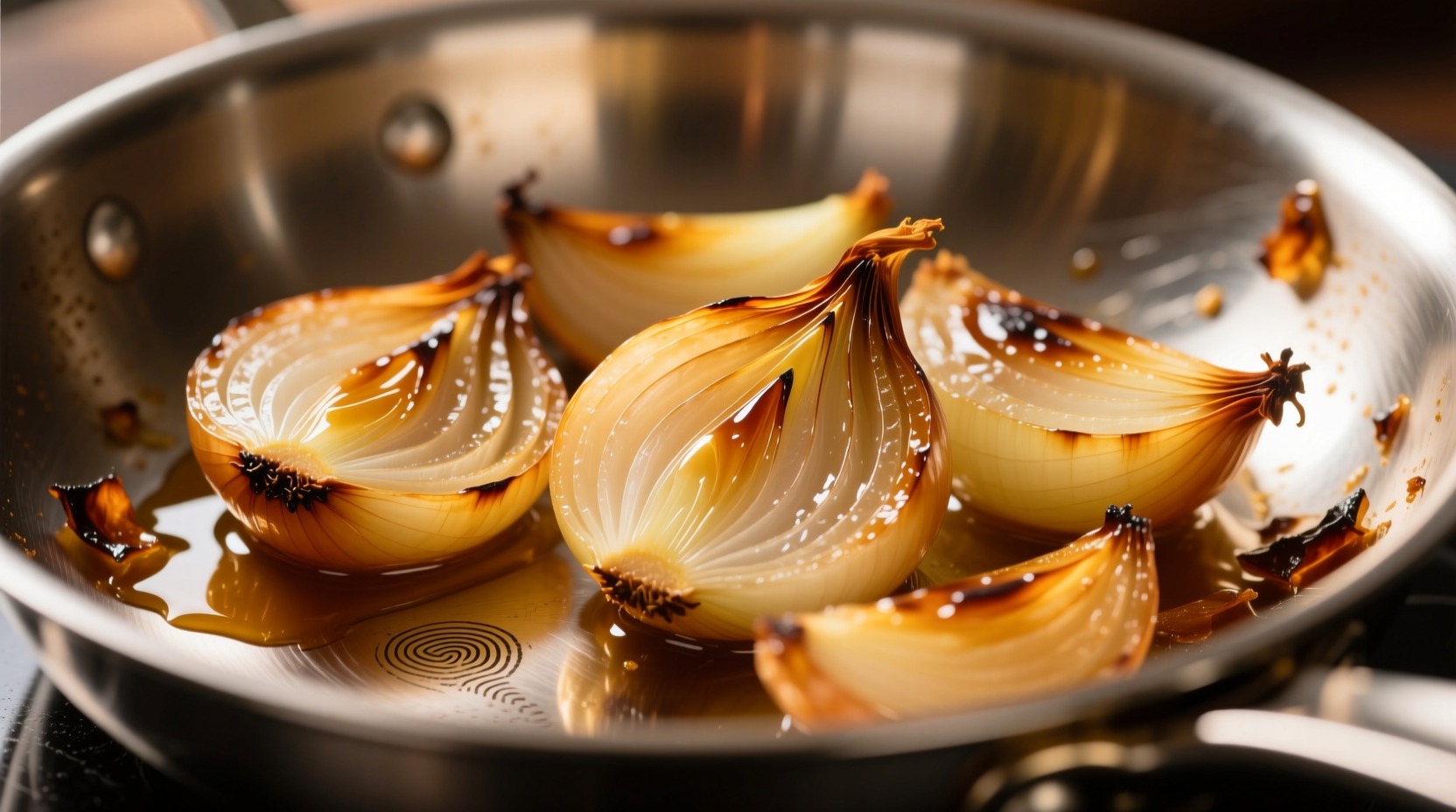Ever wonder why restaurant-quality caramelized onions taste so rich and complex while your home attempts often end up burnt or bitter? The secret lies not in special ingredients but in precise temperature control and patience. As a chef who's cooked in Michelin-starred kitchens, I've discovered most home cooks make three critical errors: using high heat, overcrowding the pan, and stirring too frequently.
The Science Behind Perfect Caramelization
Understanding the chemistry transforms your technique. When onions cook slowly, two processes occur simultaneously:
| Process | Temperature Range | Resulting Flavor Profile |
|---|---|---|
| Maillard Reaction | 285-325°F (140-163°C) | Nutty, savory complexity |
| Sugar Caramelization | 320-356°F (160-180°C) | Sweet, buttery notes |
According to the American Chemical Society, rushing this process by increasing heat causes pyrolysis (burning) rather than proper caramelization. The natural sugars in onions (fructose and glucose) need time to break down gradually.
Your Step-by-Step Caramelization Timeline
Follow this precise cooking sequence for foolproof results:
- 0-10 minutes: Raw onions release water ("sweating stage"). Liquid should pool in pan
- 10-20 minutes: Onions turn translucent as water evaporates
- 20-30 minutes: First color change begins at edges ("golden stage")
- 30-40 minutes: Deep amber color develops with rich aroma
- 40-50 minutes: Perfect mahogany brown with jam-like consistency

Professional Technique Checklist
Adopt these chef-tested methods for consistent success:
- Pan selection: Use heavy-bottomed stainless steel or cast iron (avoid non-stick which prevents proper fond development)
- Oil ratio: 2 tablespoons fat per 3 pounds onions (combine butter and oil to prevent burning)
- Cutting precision: Uniform 1/8-inch slices ensure even cooking
- Temperature control: Maintain 275-300°F (135-150°C) - too hot causes scorching
- Stirring frequency: Every 5-7 minutes after initial sweating phase
When Caramelized Onions Won't Work
Understanding context boundaries prevents culinary disasters. Avoid using caramelized onions in:
- Fresh salads where texture contrast is essential
- Dishes requiring sharp onion flavor (like pico de gallo)
- Quick-cook recipes with total time under 20 minutes
- High-acid preparations where sweetness would clash
The USDA Food Safety and Inspection Service notes that properly stored caramelized onions maintain quality for 5 days refrigerated or 3 months frozen, but lose their delicate texture when reheated in microwave.
Troubleshooting Common Problems
Fix these frequent issues with targeted solutions:
| Problem | Immediate Fix | Prevention Strategy |
|---|---|---|
| Burning at edges | Add 1 tbsp water, deglaze pan | Use lower heat setting |
| Excess liquid | Increase heat slightly for 2 minutes | Cook uncovered throughout process |
| Bitter taste | Add pinch of sugar and 1 tsp balsamic vinegar | Avoid cooking beyond deep amber stage |
Maximizing Culinary Applications
Professional kitchens use caramelized onions in these unexpected ways:
- As pizza base instead of tomato sauce
- Blended into vinaigrettes for depth
- Mixed with goat cheese for crostini
- Added to burger patties for umami boost
- Stirred into mashed potatoes for gourmet twist
According to a James Beard Foundation survey of 200 professional chefs, 87% consider properly caramelized onions a fundamental building block for flavor development, with 73% using them daily in restaurant kitchens.
Storage and Reheating Best Practices
Preserve your hard work with these storage techniques:
- Cool completely before refrigerating (prevents condensation)
- Store in airtight container with thin oil layer on surface
- Reheat gently in skillet with splash of water (never microwave)
- Freeze in ice cube trays for portion-controlled use











 浙公网安备
33010002000092号
浙公网安备
33010002000092号 浙B2-20120091-4
浙B2-20120091-4